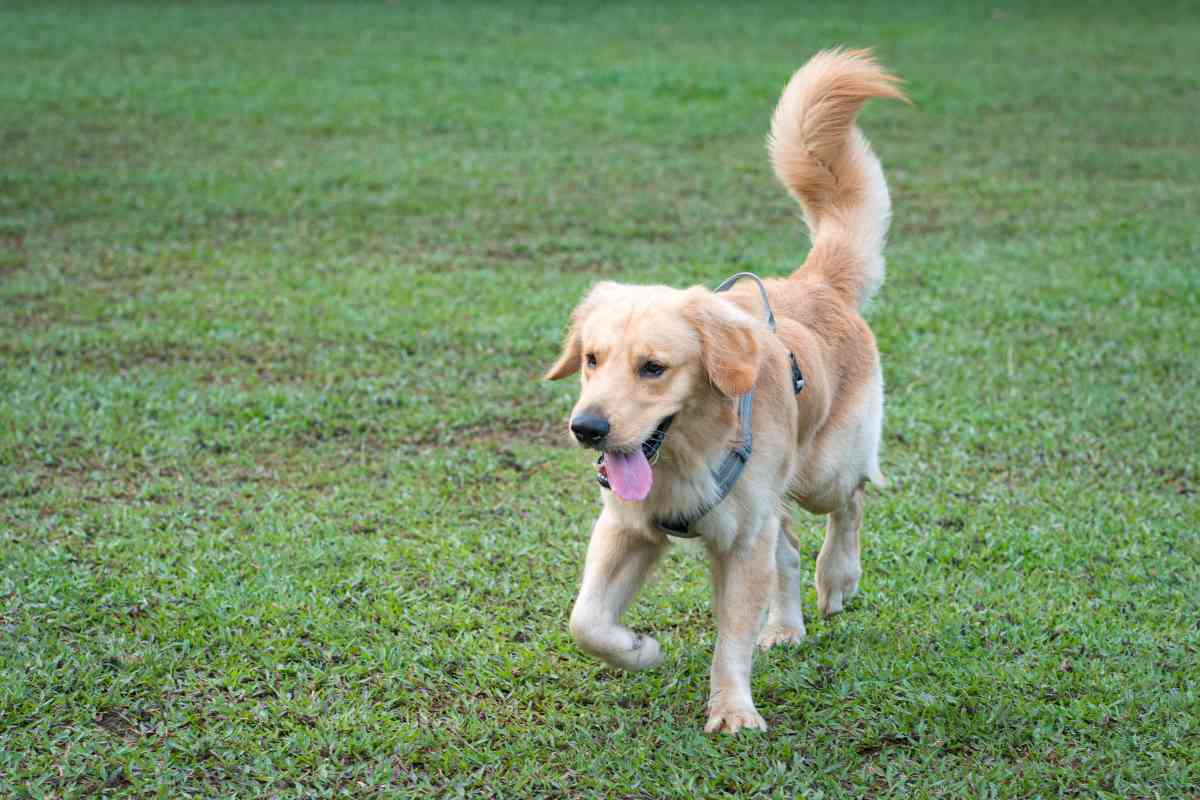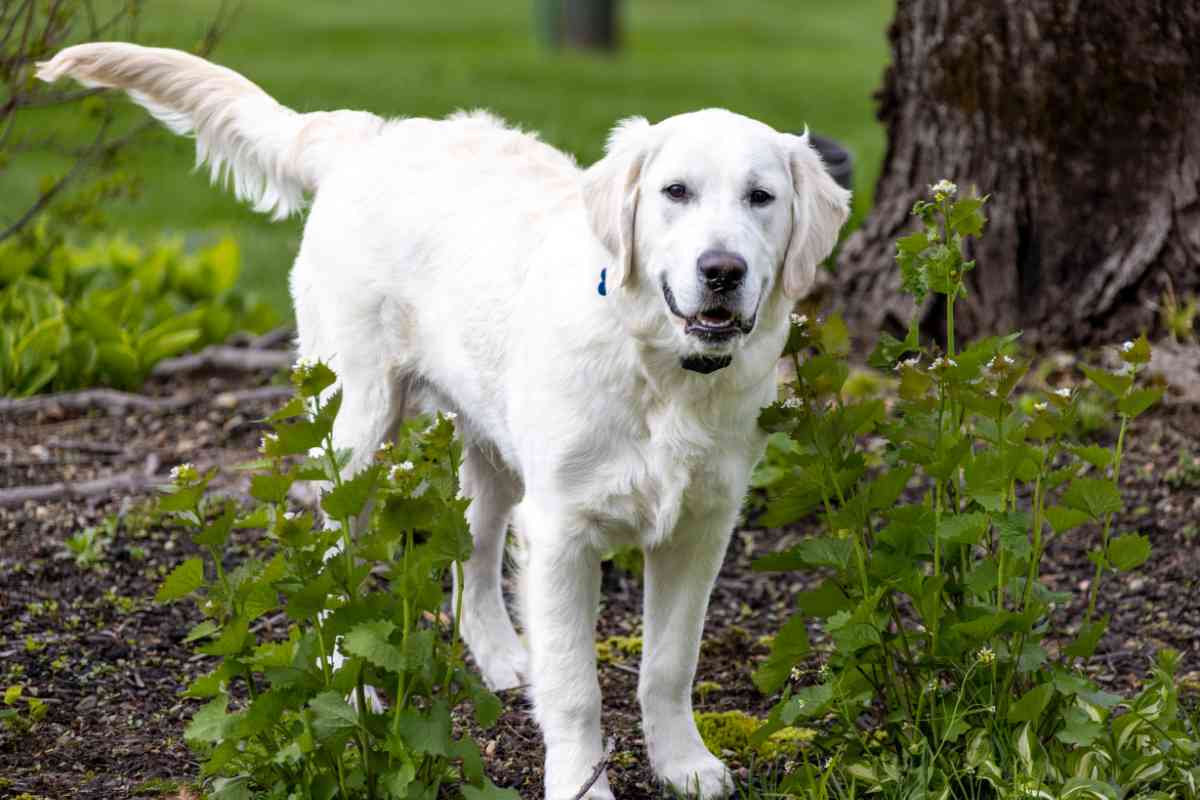Understanding Labrador Retrievers’ Body Language: A Guide for Dog Owners
Labrador Retrievers are one of the most popular dog breeds in the world. They are known for their friendly demeanor, intelligence, and loyalty. However, understanding their body language can be a challenge for many pet owners. Learning how to read your Labrador’s body language is essential for effective communication and building a strong bond with your furry friend.

How do I understand my Lab’s body language?
Labrador Retrievers have a complex language of nonverbal communication that can tell us when they’re happy or sad, fearful or angry, confident or nervous. As your Labrador is unable to express himself verbally, body language is his preferred method of communication.
Canine body language is the sum of a dog’s facial expressions and body postures that communicate their emotions and intentions to those around them.
Therefore, it’s up to us to learn how to interpret this language to better understand our furry friends.
In this article, we will explore the various body language signals that your Labrador may display, what they mean, and how to respond appropriately. By gaining a deeper understanding of your Labrador’s body language, you can strengthen your bond with your pet and ensure that he feels loved, understood, and respected. So, let’s dive in and learn more about how to understand your Labrador’s body language!
Understanding Labrador Retriever Body Language
The Importance of Body Language
Body language is a crucial aspect of nonverbal communication in dogs. As a Labrador Retriever owner, understanding your dog’s body language is essential to communicating with them and building a strong bond with your Lab.
Canine body language comprises facial expressions and body postures that communicate their emotions and intentions to those around them. It’s up to us to learn how to interpret this language.

Components of Canine Body Language
The components of canine body language include tail, eyes, legs, facial expressions, posture, tongue, barking, and other body postures.
For example, tail wagging can indicate happiness, excitement, or nervousness, while a tucked tail can indicate fear or submissiveness.
Labrador Retriever’s almond-shaped eyes are expressive and can indicate emotions such as fear, anxiety, or happiness. Similarly, a dog’s posture can indicate their mood, with a play bow indicating playfulness and relaxed shoulders indicating calmness.
Recognizing Labrador Retriever Body Language
Recognizing Labrador Retriever body language is crucial to understanding your dog’s emotions and intentions.
For example, a relaxed and open mouth can indicate a happy or relaxed dog, while a snarl or growl can indicate an annoyed or angry dog.
A Labrador Retriever’s whale eye, where the whites of their eyes are visible, can indicate fear or anxiety. Similarly, a dog that is yawning or licking their lips may be feeling anxious or unsure.
It’s also essential to pay attention to the speed and direction of tail wagging, as well as the pitch and tone of barking.
A fast, wagging tail indicates excitement or happiness, while a slow, stiff wag may indicate insecurity or fear. Similarly, high-pitched barking can indicate excitement, while low-pitched growls can indicate fear or aggression.
Labrador Retriever body language can also indicate submissiveness or dominance. A dog that is looking away or avoiding eye contact may be feeling submissive or scared, while a dog that is staring directly at you may be feeling dominant or confident.
Piloerection, where the hair on a dog’s spine and shoulders stands up, can indicate fear or aggression.
Understanding Labrador Retriever body language is a useful skill for any dog owner. By recognizing the component parts of canine body language and paying attention to your dog’s nonverbal communication, you can reassure and protect your dog and interact with them considerately and safely.
Common Labrador Retriever Body Language
Understanding your Labrador Retriever’s body language can help you communicate better with your furry friend.
Labradors are known for their friendly and outgoing nature, but they can also display a range of emotions through their body language. In this section, we will discuss some common Labrador Retriever body language and what it means.

Happy Labrador Retriever Body Language
When a Labrador Retriever is happy, they will display a range of body language cues.
A wagging tail is a classic sign of a happy dog, and Labradors are no exception. They may also hold their ears up and forward, with their eyes bright and alert. A happy Labrador will often make eye contact with their human, and their body will be relaxed and loose.
Fearful Labrador Retriever Body Language
Labrador Retrievers can become fearful in certain situations, and their body language will reflect this.
A fearful Labrador may cower or try to hide, with their tail tucked between their legs. They may also avoid eye contact and keep their ears back. A stressed or fearful Labrador may yawn frequently or lick their lips.
Aggressive Labrador Retriever Body Language
While Labradors are generally friendly, they can become aggressive in certain situations. Aggression can be displayed through body language cues such as a stiff body, raised hackles, and a tense tail.
A Labrador may also show their teeth or growl when feeling threatened or protective. It’s important to understand the cause of the aggression and seek professional help if necessary.
Submissive Labrador Retriever Body Language
A submissive Labrador Retriever will display body language cues that indicate they are not a threat.
They may lower their head and body, with their tail tucked between their legs. A submissive grin, where the dog shows their front teeth in a relaxed manner, can also be a sign of submission.
It’s important to note that a submissive Labrador is not necessarily fearful or stressed, but simply trying to communicate their non-threatening intentions.
Interpreting Labrador Retriever Body Language
| Body Language Cue | Happy Labrador | Fearful Labrador | Aggressive Labrador | Submissive Labrador |
|---|---|---|---|---|
| Tail | Wagging | Tucked between legs | Stiff, tense | Tucked between legs |
| Ears | Up and forward | Back | Normal or raised | Lowered |
| Eyes | Bright and alert | Avoiding eye contact | Intense or focused | Relaxed |
| Eye Contact | Makes eye contact | Avoids eye contact | Variable | Variable |
| Body Posture | Relaxed and loose | Cowering or hiding | Stiff and tense | Lowered |
| Yawning | Absent | Frequent | Variable | Variable |
| Lip Licking | Absent | Frequent | Variable | Variable |
| Grinning | Not a sign of fear | Not a sign of fear | Not a sign of fear | May indicate submission |
| Teeth Display | Not aggressive | Not aggressive | May show teeth | Not aggressive |
| Growling | Not aggressive | Not aggressive | May growl | Not aggressive |
| Hackles (Hair on Back) | Relaxed | Relaxed | Raised | Relaxed |
Note: It is important to consider that each Labrador Retriever may have slightly different variations in their body language cues. It is crucial to observe their overall behavior and context to accurately interpret their emotions and intentions.
If you are unsure or concerned about your Labrador’s behavior, it is recommended to consult a professional dog trainer or veterinarian for guidance.

Conclusion
Understanding your Labrador’s body language is a useful skill that can help you communicate better with your furry friend. By recognizing the signs and signals they use to express themselves, you can better understand their needs, emotions, and intentions.
Canine communication is complex, and Labradors are no exception. They use a variety of signals to convey their emotions, including body posture, facial expressions, vocalizations, and tail movements. By paying attention to these cues, you can tell if your dog is happy, anxious, in doubt, or even angry.
Some of the signs of a happy dog include a relaxed body posture, a wagging tail, and an open mouth. On the other hand, an anxious or fearful dog may have a tense body posture, a tucked tail, and may growl or show piloerection (raised fur). It’s important to note that a wagging tail doesn’t always mean a happy or friendly dog; it can also be a sign of nervousness or appeasement.
Confident or nervous dogs may display different body language cues, such as standing tall or crouching down, respectively. If your dog is fearful or angry, it’s important to reassure and protect them while considering their safety and the safety of those around them.
In conclusion, understanding your Labrador’s body language can help you build a stronger bond with them and keep them happy and healthy. By observing their behavior and responding considerately and safely, you can become a better dog owner and enjoy a more fulfilling relationship with your furry friend.






